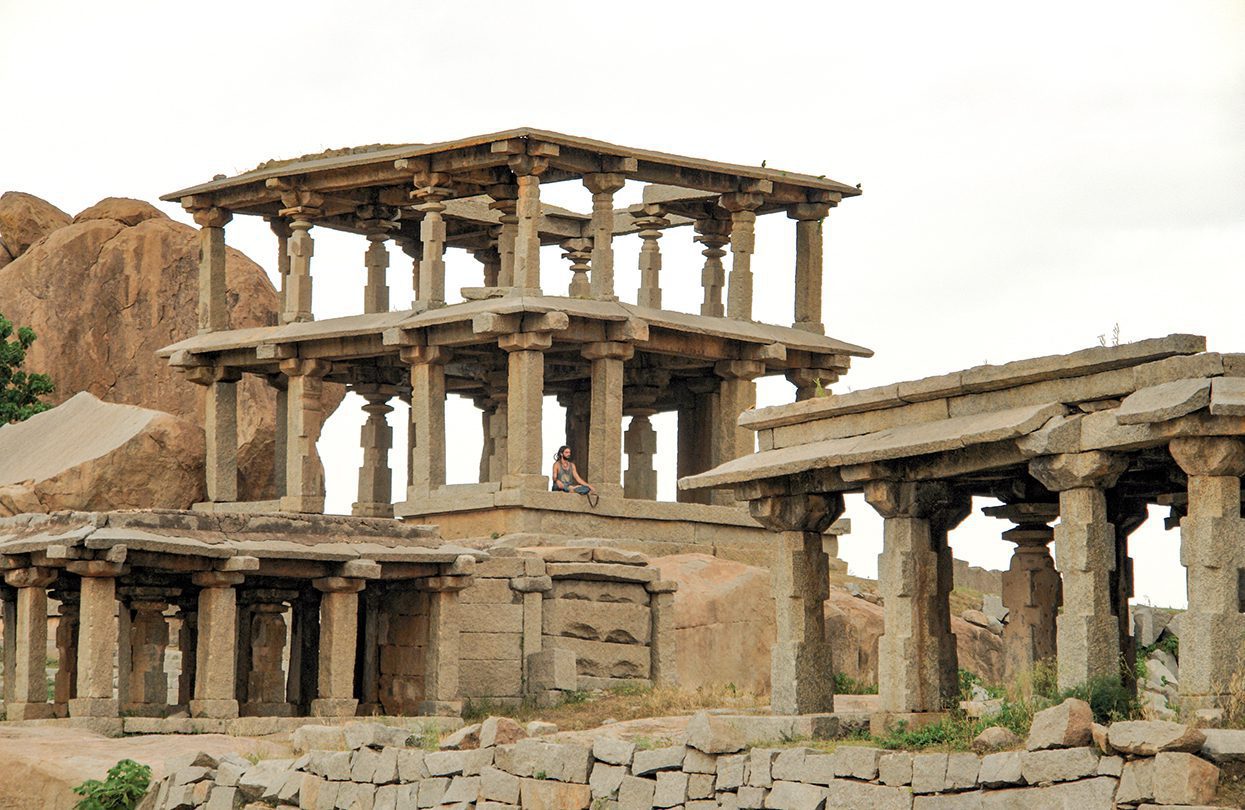[vc_row][vc_column][vc_column_text]The erstwhile capital of the prosperous Vijayanagara empire has over 1600 temples, monuments and royal ruins that attract visitors from all over the world.
When I reach the top of Hemakuta Hill after an easy hike from Virupaksha temple located at one end of what used to be the main bazaar road in Hampi, I am surprised to see a solitary Western tourist on one of the old mandapas (open, pillared halls) there. He is sitting crossed-legged, facing the mellow evening sun, eyes shut, deep in meditation.
There are many reasons people go up to Hemakuta – to watch the sun set over the rust brown rocks and monuments scattered in the midst of emerald green paddy fields and banana plantations of this unique landscape in south India; to get a bird’s eye view of Hampi’s most spectacular temples, with the River Tungabhadra snaking calmly at a distance; in my case, to get over the fatigue of temple-hopping and the ceaseless songs of these timeless monuments.[/vc_column_text][/vc_column][/vc_row][vc_row][vc_column][vc_column_text]
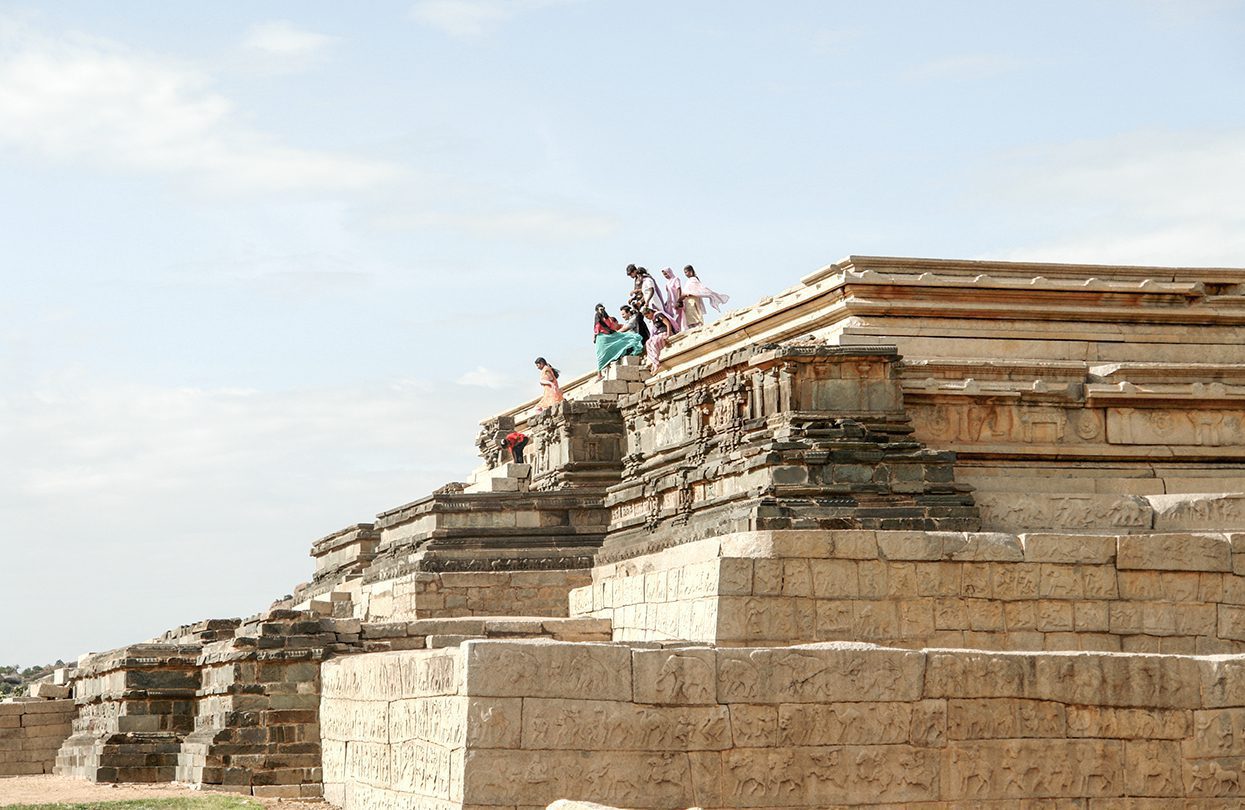
Known as Navami Tibba, this high ground is where the king oversaw ceremonial and festive occasions
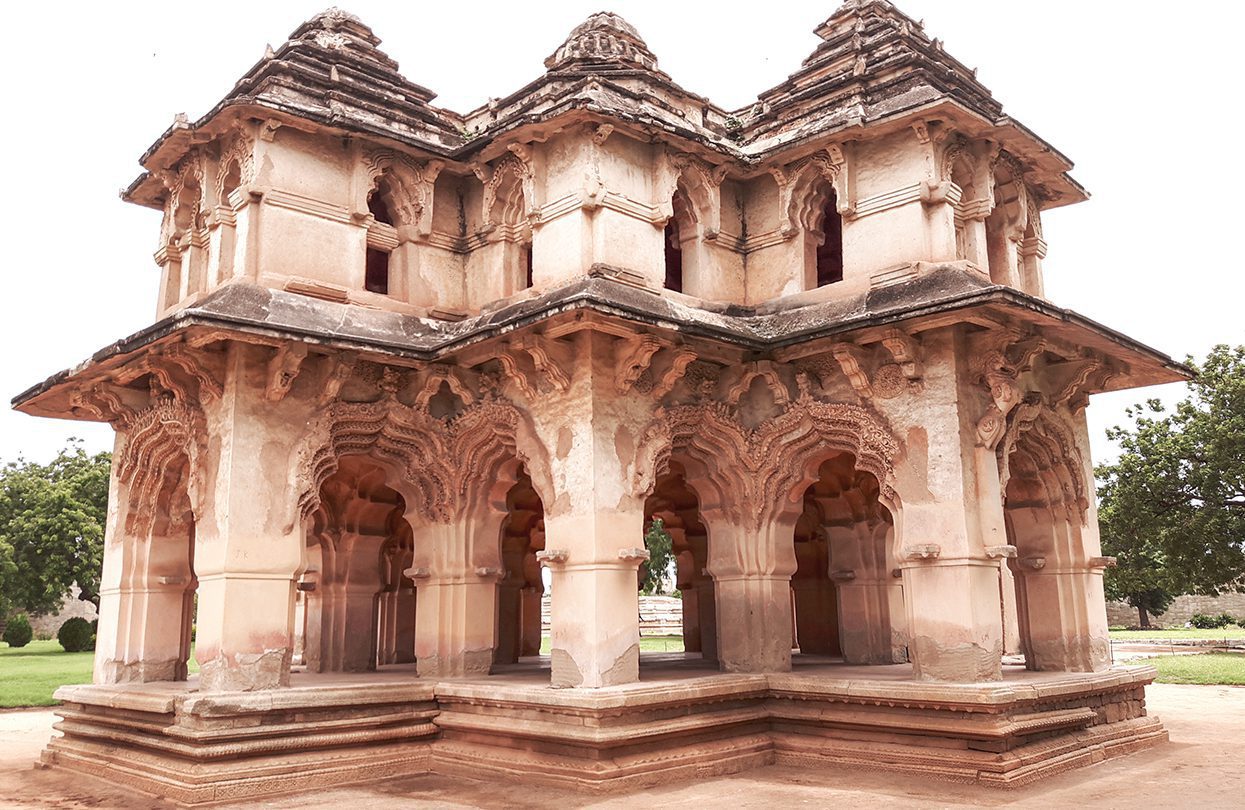
The Lotus Palace inside the Royal Quarters
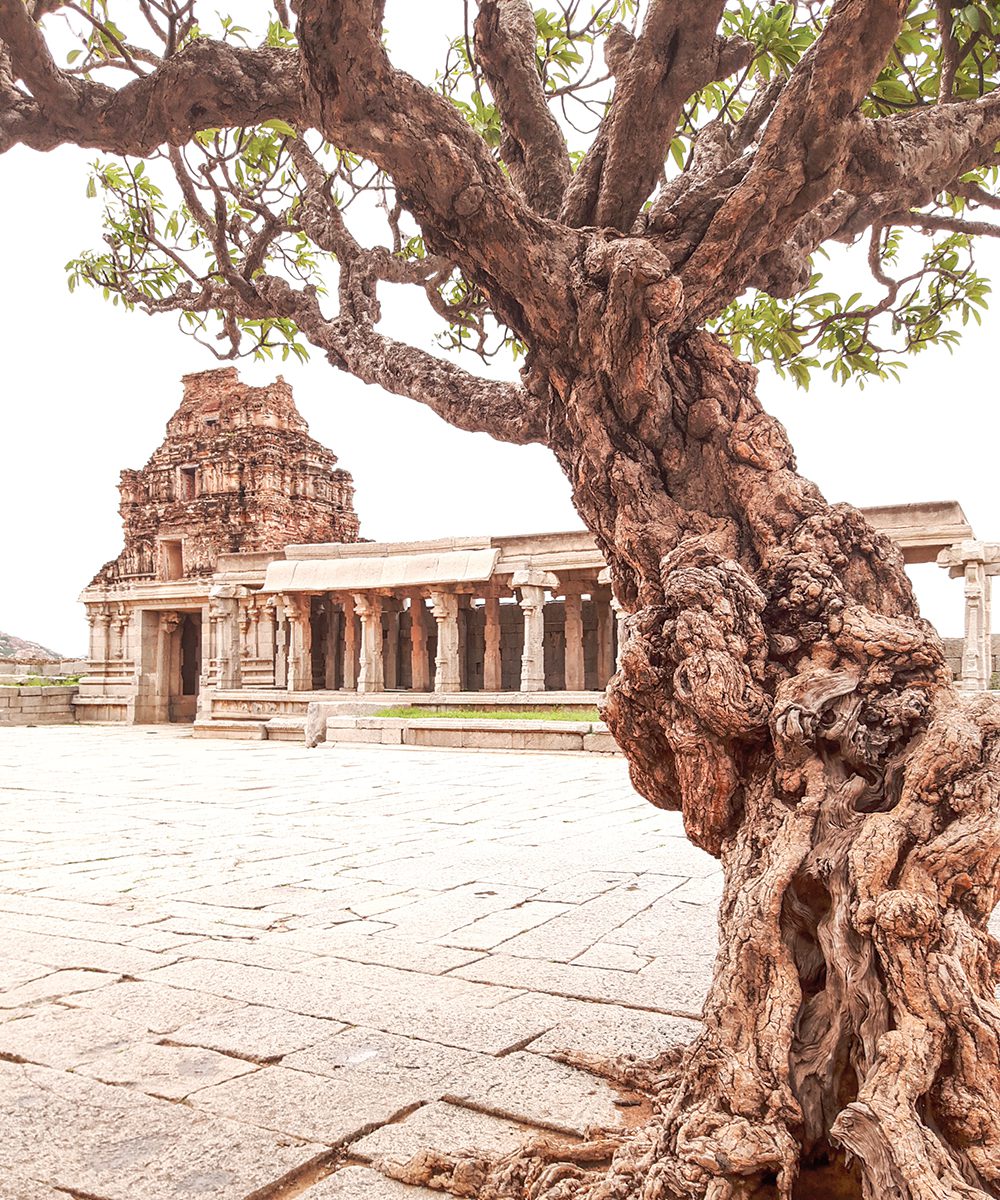
The UNESCO listed Vitthala temple is one of the biggest highlights within Hampi
[/vc_column_text][/vc_column][/vc_row][vc_row][vc_column][vc_column_text]In all my trips to Hampi, I have rarely seen anyone use it as a place for serious meditation. But then, Harihara and Bukka, the founders of the ancient Vijayanagara Empire, who established it as their capital in the 14th-century must have also seen something both peaceful and powerful enough in these miles of barren rocky landscape to make it home. It is the same force that calls me back again and again to stare in awe at its timeless sepia structures. In declaring them a world heritage site, UNESCO describes the group of monuments at Hampi thus: “The sophistication of the varied urban, royal and sacred systems is evident from the more than 1600 surviving remains that include forts, riverside features, royal and sacred complexes, temples, shrines, pillared halls, Mandapas, memorial structures, gateways, defence check posts, stables, water structures, etc.”
For now, from the hillock, I stare at the countryside sprawled for miles around me, especially the strange shapes of the boulders that seem to have been strewn around by a careless hand and are waiting for that strong gust of wind to send them toppling over. But no, they sit tight, the way they have been sitting for centuries, and no sun or rain seems to be able to move them in any way.[/vc_column_text][/vc_column][/vc_row][vc_row][vc_column][vc_column_text]
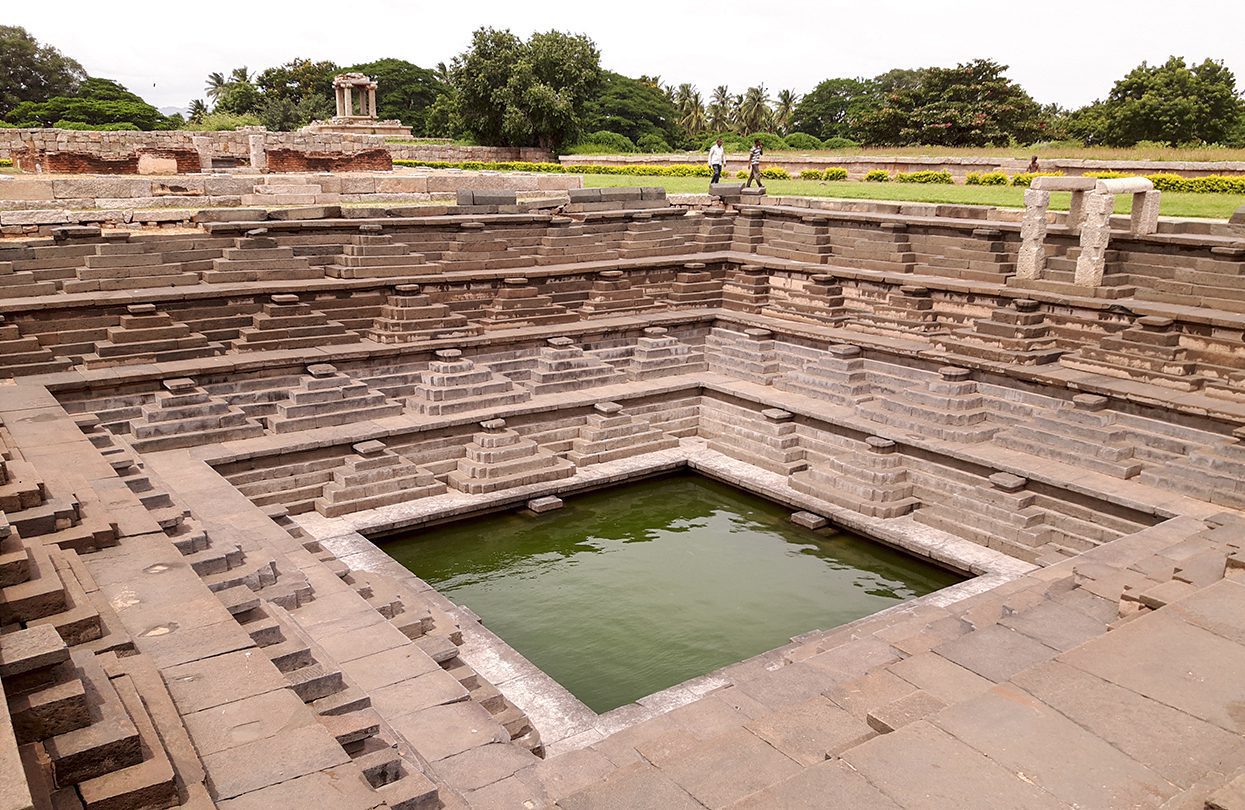
Stepwells, known as kalyani, are a prominent feature of Hampi’s history

Each of this set of pillars inside the main hall at the Vitthala Temple emits a musical note when struck lightly.

View of Virupaksha Temple from the top of Hemakuta Hill
[/vc_column_text][/vc_column][/vc_row][vc_row][vc_column][vc_column_text]Speaking of stones that sing, one the most popular of Hampi’s monuments, the Vijaya Vitthala temple literally contains a set of pillars that emit musical notes when struck lightly with the hand or a stick. The Vithhala temple is a pleasant walk along the river, where local women have gathered to wash their bright, quick-dry saris and chat with each other, and the temple elephant has been brought for her daily ritual bath. This temple is located inside a larger complex, where the stone chariot – the official icon of the state’s tourism board – welcomes me.
The dancing hall in the middle of the complex is closed to curious visitors in order to protect the “musical pillars” from further damage, but I can see the delicate figures carved on all the walls and pillars, with scenes from royal life – from elaborate court ceremonies with musical processions and dancing girls to preparations for war complete with lines of armoured elephants and horses. Closer to the river is the giant stone Tulabhara, the King’s Balance, where on special occasions, kings and queens weighed themselves against gold, precious stones and even rice and grains to be distributed among their people. None of what I see in this temple is surprising, for the Vijayanagara rulers were known to be benevolent towards their citizens as well as great patrons of the arts.[/vc_column_text][/vc_column][/vc_row][vc_row][vc_column][vc_column_text]
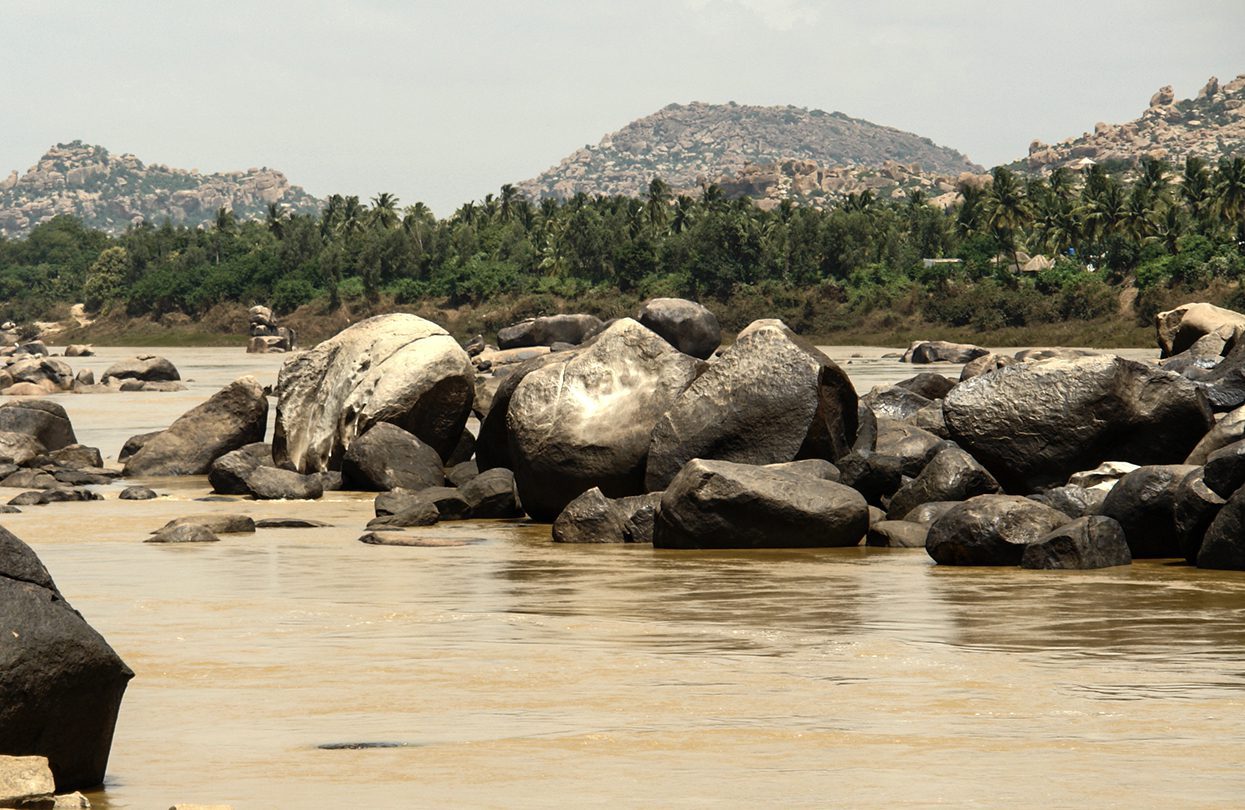
The Thungabhadra river is the lifeline of Hampi and the surrounding regions

The rocky landscape of Hampi hides many ancient temples and monuments

This man plays his music inside the Virupaksha temple
[/vc_column_text][/vc_column][/vc_row][vc_row][vc_column][vc_column_text]The other prominent landmark in Hampi is the towering Virupaksha temple, still intact after centuries of onslaught from both human invaders and from natural elements, and functioning as place of worship dedicated to Lord Shiva. This early 15th-century temple is most interesting during the puja (prayer) hours in the morning and evening, when locals and tourists alike throng the open courtyard and the inner sanctum for a look at the deity and (in case of the latter), the incredible architecture. If the temple elephant is back from the bath by then, she is usually available to shower her blessings on visitors in exchange for a few small notes, and occasionally, the old man with his curved trumpet blows a couple of musical notes also in return for a monetary reward and a smile.
Hampi has two zones – the sacred and the royal. And as I know from personal experience, it is very easy to get exhausted from all the temple visits. So it is a good idea to take a break in the royal centre to get an idea of how the kings of yesteryears lived and ruled. The zenana enclosure, where the women stayed, is my particular favourite, with its soft pink lotus mahal palace, the grand bathing area and the squat line of elephant stables. For some reason, most tourists tend to stay away from this part, often leaving it without the crowds found at the other sights.[/vc_column_text][/vc_column][/vc_row][vc_row][vc_column][vc_column_text]
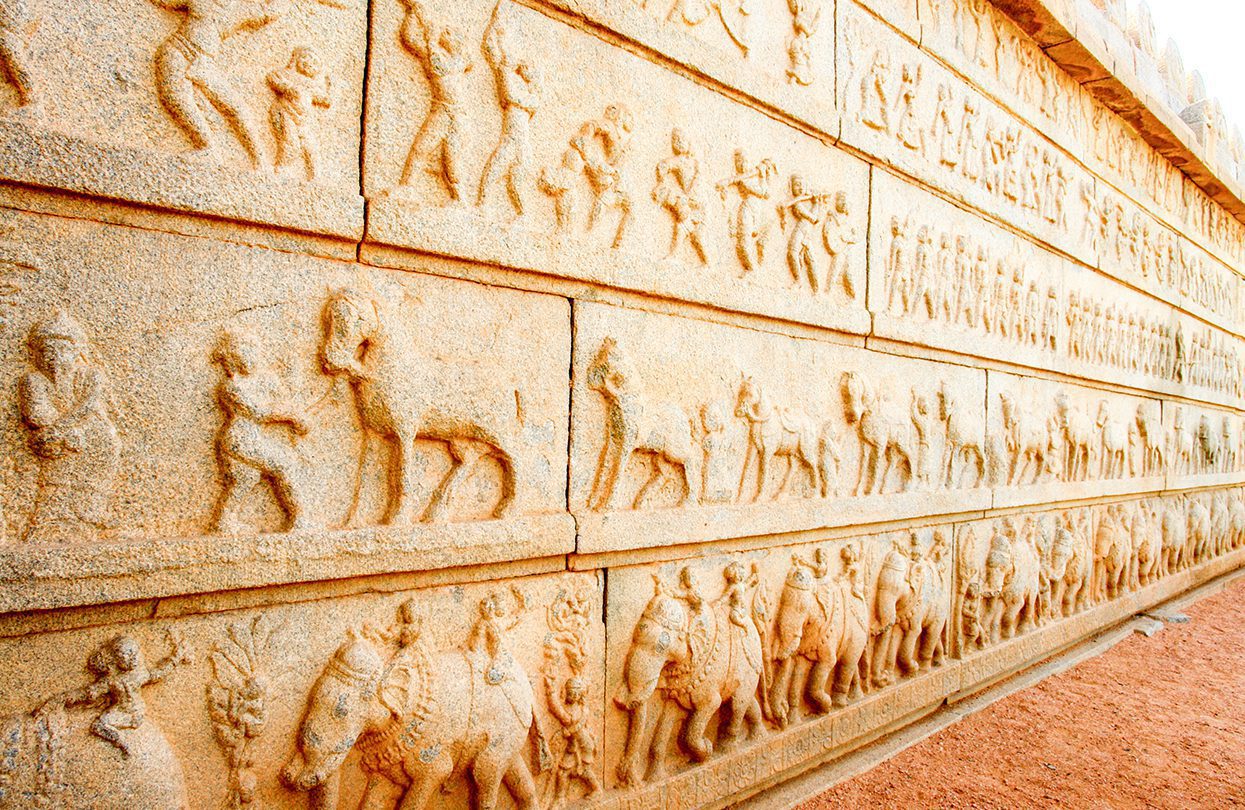
Inscriptions from ancient texts adorn the walls of Hampi’s temples
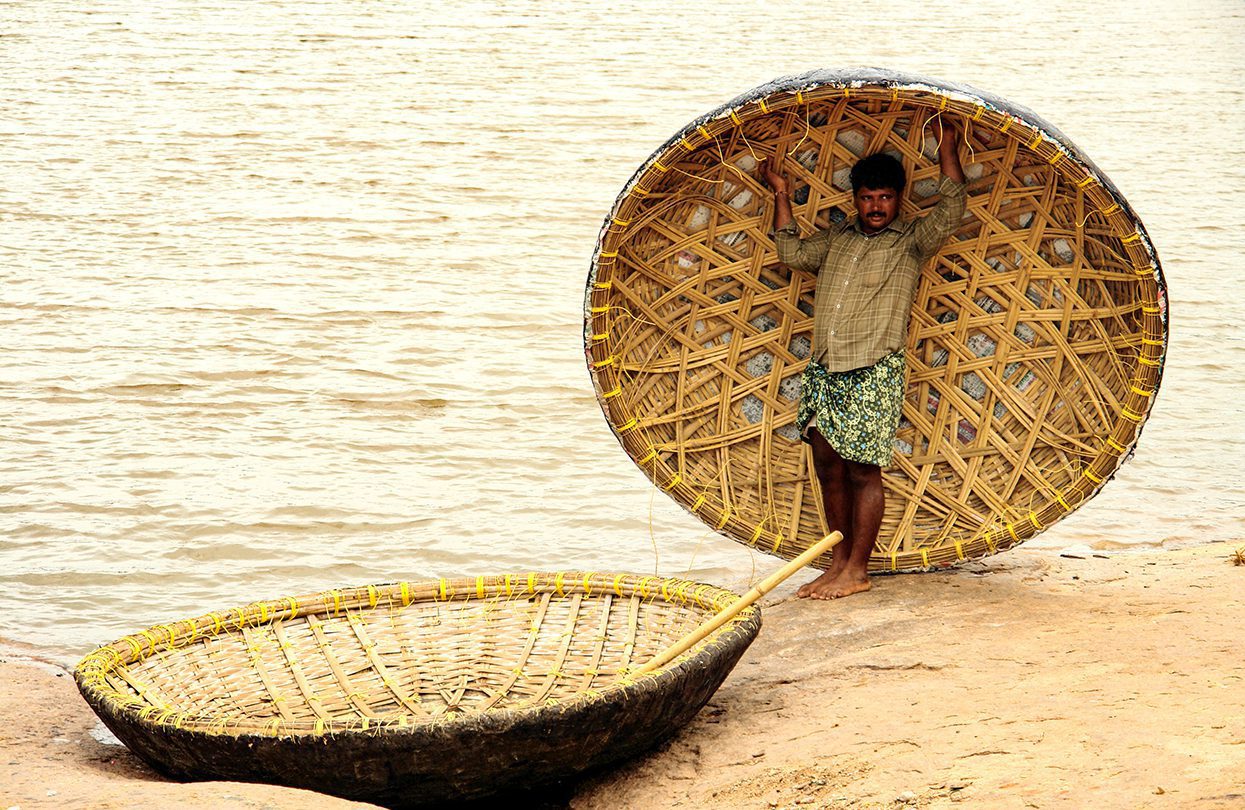
These round boats, known as coracles, are the best way of going across the Thungabhadra River.
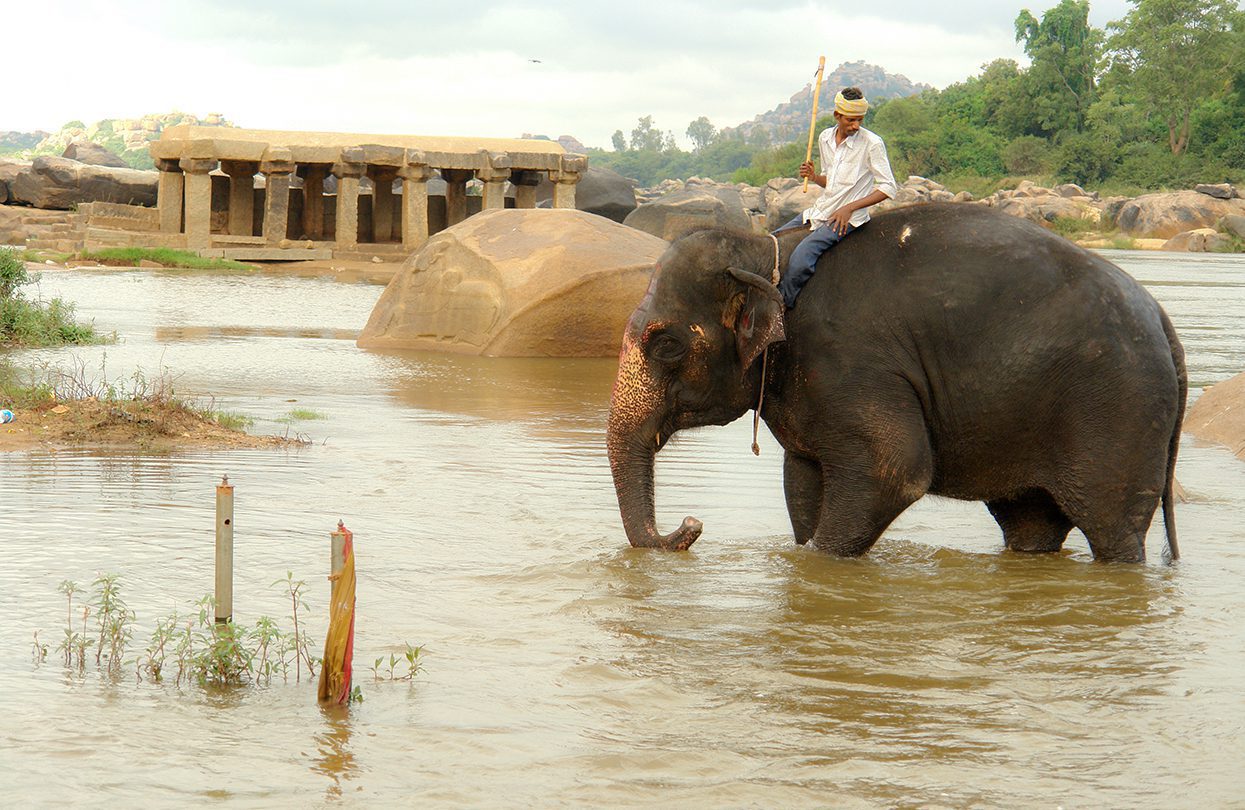
The temple elephant takes a ritual bath in the river every morning
[/vc_column_text][/vc_column][/vc_row][vc_row][vc_column][vc_column_text]The counterpart to the zenana area contains several of the stunningly geometric stepwells known as kalyani, used to store water in these arid lands, and the massive Navami Tibba platform, from where the king viewed ceremonial processions such as the Dusshera festivities. Of course, in Hampi, there is no getting away from temples, but the one in this area is small and exquisite – while the interiors of the Hazara Rama temple provide a welcome relief from the heat with their smooth and cool black granite pillars and floors, the outer walls tell the story of the Ramayana epic in the form of intricate stone carvings.
At the end of another long day at Hampi, I head back to the river, this time to take a joy ride on a coracle. These round boats traditionally made of bamboo with a layer of buffalo hide (or plastic these days) at the bottom, are strong enough to transport people and even motorbikes across the river. As I sit on one side of the boat, silently watching the spectacle of nature all around me, I realise once again that there is no other place quite like Hampi.
How to get there: Fly from Bangalore to Vidyanagar (Bellary), from where Hampi is just an hour’s drive (38 km) away, or take the overnight train to Hospet (12 km / 30 minutes).
Where to stay: Evolve Back (www.evolveback.com/hampi) is an ode to the royal grandeur of Hampi and comes with an option of rooms and suites. The new Hyatt Place (www.hyatt.com) is another luxury option, located close to the airport.
Words & photographs by Charukesi Ramadurai◼
[/vc_column_text][vc_column_text]Subscribe to the latest edition now by clicking here.
© This article was first published in Oct-Nov 2019 edition of World Travel Magazine.[/vc_column_text][/vc_column][/vc_row]

